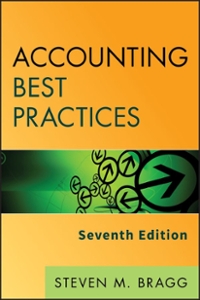1. Investigate the effects of changing the payment and compounding frequency of an ordinary annuity. Use the TVM Solver to complete the following chart. Payment Amount Payment Frequency Compounding Frequency Number of Payments Interest Rate Future Value [per annum) of Annuity $1200 Annually Annually 10 9% $600 Semi-Annually Semi-Annually 20 3% $300 Quarterly Quarterly 40 9% $100 Monthly Monthly 120 9% $23.08 Weekly Weekly 520 9% $3.2 Daily Daily 3650 9% a) Verify that the total of all payments made is the same for each case. b) Does the future value increase by the same amount each time? Explain. c) Summarize the effect of changing the payment frequency on the future value of an annuity when all other conditions remain the same. 2. Investigate the effects of changing the interest rate of an ordinary annuity. Use the TVM Solver to complete the following chart. Payment Amount Payment Frequency Compounding Frequency Number of Payments Interest Rate Future Value (per annum) of Annuity $50 Weekly Weekly 520 2% $50 Weekly Weekly 520 4% $50 Weekly Weekly 520 5% $50 Weekly Weekly 520 3% $50 Weekly Weekly 520 10% $50 Weekly Weekly 520 12% a) Does the future value increase by the same amount each time? Explain. b) Is there a common ratio between the future value amounts? Explain. c) Summarize the effect of changing the interest rate of an annuity when all other conditions remain the same. 3. A student begins saving for college by making regular monthly payments of $200.00 into an account that earns 5% per annum interest, compounded monthly. a) Determine the value of the annuity after four years. PAY= PMT ENC BEGINHK Exit Fullscreen 3. A student begins saving for college by making regular monthly payments of $200.00 into an account that earns 5% per annum interest, compounded monthly. a) Determine the value of the annuity after four years. N= Puj= PMT= FV= PMT:ENC BEGIN b) If the amount of the payments was changed to $300.00, what would the future value after four years be? Determine this without the TVM Solver! c) Determine the amount of additional interest earned using $200.00 monthly payments with an interest rate of 8% per annum instead of 5% per annum. PMT ENC BEGIN 4. A $20 000 car loan is charged 3.9% per annum interest, compounded quarterly. a) Determine the quarterly payments needed to pay the loan off in five years. PU= P/Y= PMTOENC BEGIN b) How much faster would the loan be paid off using the same payments, if the interest rate was lowered to 1.9%? PU= PMT PA PMTOENC BEGIN c) How much in interest charges could be saved (compared to part a.) by making weekly payments of $100.00, if interest is charged at 3.9%, compounded weekly.PMTBENC BEGIN MK Exit Fullscreen c) How much in interest charges could be saved (compared to part a.) by making weekly payments of $100.00, if interest is charged at 3.9%, compounded weekly. CAY= MT ENC BEGIN 5. Luke and Laura are each paying off loans of $5000.00. Luke makes monthly payments of $75.00 and interest is charged at 9% per annum, compounded monthly. Laura pays the loan off in the same amount of time, but her monthly payments are only $65.00. Determine the annual interest rate that Laura is charged. PU= ENT= IP/= CAY= PMT:ENC BEGIN 6. Pascale has just finished college and started her career. She plans to start saving money early so that she can retire at age 55. She decides that she needs $800 000.00 when she retires. a) How much does Pascal need to deposit monthly into an investment that earns 8% /a, compounded monthly if she starts when she is 25 years old? N= PU= PMT= PAY= CAYE PMTOENC BEGIN b) What would her required monthly payments be if she didn't start saving until age 40? N= PU= PAY= PMT:ENC BEGIN This is a disclaimer. External Resources will open in a new window. Not responsible for external content. Overview | Expectations | Content | Assignment









